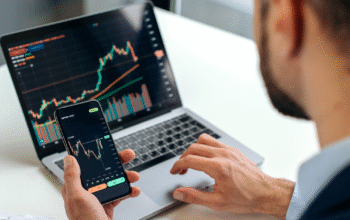Water is essential to life, yet for much of history, it was never treated as a tradable asset. That is beginning to change. As droughts intensify, populations grow, and agriculture demands more irrigation, water is being discussed not only as a natural resource but as a potential commodity. The idea of water as something that can be bought and sold may sound controversial, but for traders and investors interested in commodities trading, it is a topic worth exploring.
The question is not just whether water can be traded, but whether it should be and how it might impact markets, industries, and communities in the years ahead.
Water Futures Are Already a Reality
In 2020, the CME Group launched the first water futures contract based on the Nasdaq Veles California Water Index. This index tracks the price of water rights in California, where water scarcity is a growing concern. These contracts allow farmers, municipalities, and institutional investors to hedge against the risk of rising water costs.
These futures do not involve physical delivery. Instead, they are cash-settled, meaning the buyer does not receive barrels of water but rather profits or losses based on how the index moves. In the context of commodities trading, this is similar to how traders use financial instruments to speculate on oil, electricity, or carbon credits.
Why Water Trading Is Gaining Traction
Water scarcity is no longer a distant issue. Regions across North America, Asia, and Africa are facing shortages. Climate change, inefficient usage, and uneven distribution have turned water into a strategic asset.
Agriculture accounts for roughly 70 percent of global freshwater use. When water prices spike, food production costs can soar. This creates ripple effects across global markets. By trading water or instruments linked to it, stakeholders aim to manage risk in the same way they do with oil or wheat.
Traders in commodities trading are watching this space closely. As water becomes more volatile and valuable, it offers both hedging opportunities and speculative potential.
Access vs Ownership: The Debate Around Ethics
Unlike oil or gold, water is a human right. This makes trading it feel more personal and emotionally charged. Critics argue that allowing water to become a tradable asset puts basic needs at the mercy of market speculation. Supporters counter that markets can help allocate water more efficiently and incentivize conservation.
This debate is far from settled. Regulations vary by region, and governments are still figuring out how to manage water access while also dealing with scarcity. Traders interested in this space must understand both the financial and moral implications.
Alternative Ways to Trade Water Exposure
Beyond futures, there are other ways to gain exposure to water as a theme. Investors can trade ETFs focused on water infrastructure, utilities, or technology companies that specialize in filtration, irrigation, or desalination.
These funds do not involve the commodity directly but provide access to the broader economic movement around water security. In commodities trading, this is often referred to as thematic investing, betting not on the raw material itself, but on the industries that depend on it.
What to Watch Going Forward
Water trading is still in its early stages. The markets are thin, and participation is limited compared to oil, metals, or agriculture. But the direction is clear. As scarcity increases and data becomes more reliable, more financial instruments may emerge.
Governments will play a central role in shaping how water is managed and traded. Policies around rights, usage limits, and pricing will determine how viable water trading becomes on a larger scale.
A New Frontier with High Stakes
Water is unlike any other commodity. It is essential, sensitive, and political. For that reason, trading it demands a different level of awareness and responsibility. But for those engaged in commodities trading, it also represents a frontier, one that blends risk management, sustainability, and economics in a deeply impactful way.











